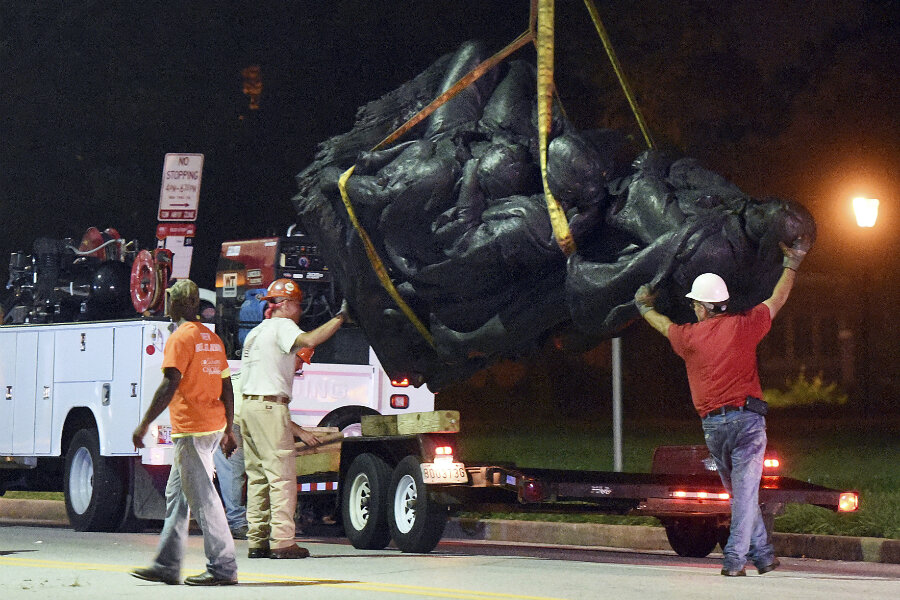In the dark of night, Baltimore quietly removes its Confederate statues
Loading...
| Baltimore
Confederate monuments in Baltimore were quietly removed and hauled away on trucks in darkness early Wednesday, days after a violent white nationalist rally in Virginia that was sparked by plans to take down a similar statue there.
Baltimore Mayor Catherine Pugh told The Baltimore Sun that crews began removing the city's four Confederate monuments late Tuesday and finished around 5:30 a.m. Wednesday.
"It's done," Mayor Pugh told the newspaper. "They needed to come down. My concern is for the safety and security of our people. We moved as quickly as we could."
Workers used cranes to lift the towering monument to Robert E. Lee and Thomas J. "Stonewall" Jackson onto a flatbed truck in the dark.
Pugh said Monday that she had contacted two contractors about removing the monuments, but declined to say when they would come down, saying she wanted to prevent the kind of violence seen in Charlottesville, Va. Pugh said at the time that she wants the statues to be placed in Confederate cemeteries elsewhere in Maryland.
A commission appointed by the previous mayor recommended removing a monument to Marylander Roger B. Taney, the Supreme Court justice who wrote the Dred Scott decision denying citizenship to African-Americans, as well as a statue of two Virginians – the Confederate generals Lee and Jackson.
Instead, former Mayor Stephanie Rawlings Blake put up signs calling them propaganda designed to falsify history and support racial intimidation.
Baltimore's swift removal of the monuments comes days after what is believed to be the largest gathering of white supremacists in a decade – including neo-Nazis, skinheads and Ku Klux Klan members. They descended on Charlottesville for a rally prompted by the city's decision to remove a monument to Lee.
Violent clashes broke out between white nationalists and counterprotesters and a woman was killed when a car plowed into a crowd of people who were there to condemn the white nationalists.
A memorial service for 32-year-old Heather Heyer is scheduled Wednesday morning at a downtown Charlottesville theater.
Greg Baranoski was walking his dog in Baltimore's Mt. Vernon neighborhood just after midnight on Wednesday morning when he saw a crane. At first he thought it was having trouble making a particularly narrow turn, but quickly realized a crew was taking down the Taney statue. He said he and about a dozen others looked on as the crew worked. It took about 40 minutes, he said.
"It was the fastest thing I've ever seen the city do," he said. "It was amazing, really amazing."
Mr. Baranoski said that until recently, he admired the monuments as pieces of art even though he didn't agree with "what they stood for." But he said in the past few days, he's come to believe that the monuments should be removed.
"A lot of these monuments were placed here in the 19-teens and 20s, years after the Civil War, it was done to remind certain folks who is in power," he said. "I was happy to see them go. Having them out of sight is good for the city, and I hope the city makes plans to do something with the empty pedestals."
Baranoski's suggestion: Replace the Taney statue with one of Thurgood Marshall.
"It'd be super poetic to replace the statue of Chief Justice Taney with Justice Marshall," he said.







